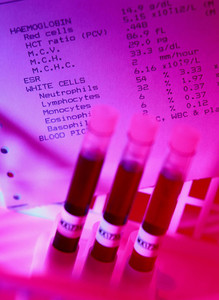EMA announced on 25 June 2012 the release of the finalised versions of seven new guideline modules outlining good pharmacovigilance practices (GVPs) to assist sponsors with complying with the soon-to-be implemented pharmacovigilance (PV) legislation, which comes into effect on 2 July 2012.
EMA finalises pharmacovigilance guidance
Home/Guidelines
|
Posted 06/07/2012
 0
Post your comment
0
Post your comment

The seven modules were available on the EMA website for public consultation until 18 April 2012. Each of the finalised modules, which were developed by a team consisting of experts from EMA and from EU Member States, covers a major topic involved in the safety monitoring of medicines, including PV quality systems, PV system master files, risk management systems, reporting of adverse reactions, periodic safety update reports (PSURs), post-authorisation safety studies and signal management [1].
The new PV legislation was proposed by the European Commission in 2008 and adopted by the European Parliament and the Member States in December 2010. It includes a tightening of requirements relating to product information and identification, as well as the regulations surrounding biosimilars and automatic substitution by pharmacists [2].
Specific points related to biological medicines:
- While all medicines have the potential to cause adverse reactions, biologicals, due to their biological nature and complex structure require adverse reaction tracking per individual product for, e.g. immunogenicity reactions. This is especially important when considering that such reactions may be too rare to detect during clinical trials prior to marketing authorisation.
- Analysis of adverse reactions should be possible for biologicals both by product class, e.g. epoetin; and by individual product level, that is separated by manufacturer or marketing authorisation holder.
- There is no evidence to suggest that biosimilars may need more rigorous PV than originator biologicals.
- The legislation demands that each biological medicine including biosimilars has a distinct name that clearly distinguishes it from other biological medicines. This is to ensure clear identification, safe prescription and dispensing of medicines to patients, and enable accurate reporting and analysis of adverse event data, i.e. improve traceability.
- Due to the risk for adverse immunogenic reactions for biologicals in the post-marketing approval period, it is important to educate healthcare providers so that they use distinct names for biologicals rather than the non-proprietary (active substance) name. This is necessary to ensure that there is no confusion about the physician’s intended treatment choice, as this could lead to automatic substitution and inaccurate attribution of adverse reactions due to the fact that the prescribing physician may not be aware of which medicine the patient received.
EMA also released two further modules of the guideline on GVP on 27 June 2012:
- Module III: Pharmacovigilance inspections
- Module X: Additional monitoring
These modules are available for public consultation until 24 August 2012 on the EMA website at http://www.ema.europa.eu/ema/index.jsp?curl=pages/news_and_events/news/2012/06/news_detail_001550.jsp&mid=WC0b01ac058004d5c1.
EMA expects to have 16 modules in the full set of GVP guidance, which is a key deliverable of the 2010 PV legislation. The remaining seven draft modules making up the entire GVP package are under development and are expected to be released for consultation later during 2012.
References
1. GaBI Online - Generics and Biosimilars Initiative. EMA released pharmacovigilance guidelines for public consultation [www.gabionline.net]. Mol, Belgium: Pro Pharma Communications International; [cited 2012 Jul 6]. Available from: www.gabionline.net/Guidelines/EMA-released-pharmacovigilance-guidelines-for-public-consultation
2. GaBI Online - Generics and Biosimilars Initiative. Tighter EU rules on pharmacovigilance for biologicals [www.gabionline.net]. Mol, Belgium: Pro Pharma Communications International; [cited 2012 Jul 6]. Available from: www.gabionline.net/Policies-Legislation/Tighter-EU-rules-on-pharmacovigilance-for-biologicals
Source: EMA, IFPMA, WHO Pharmacovigilance
Policies & Legislation
ANVISA tackles 24-month backlog in biologicals post-registration petitions
US EO: delivering Most-Favored-Nation Prescription Drug Pricing to American patients
Most viewed articles
The best selling biotechnology drugs of 2008: the next biosimilars targets
Global biosimilars guideline development – EGA’s perspective
New guidance for biologicals in Pakistan and Hong Kong’s independent drug regulatory authority

Home/Guidelines Posted 20/10/2025
Canada poised to remove requirement for Phase III trials for biosimilars

Home/Guidelines Posted 22/07/2025
The best selling biotechnology drugs of 2008: the next biosimilars targets








Post your comment